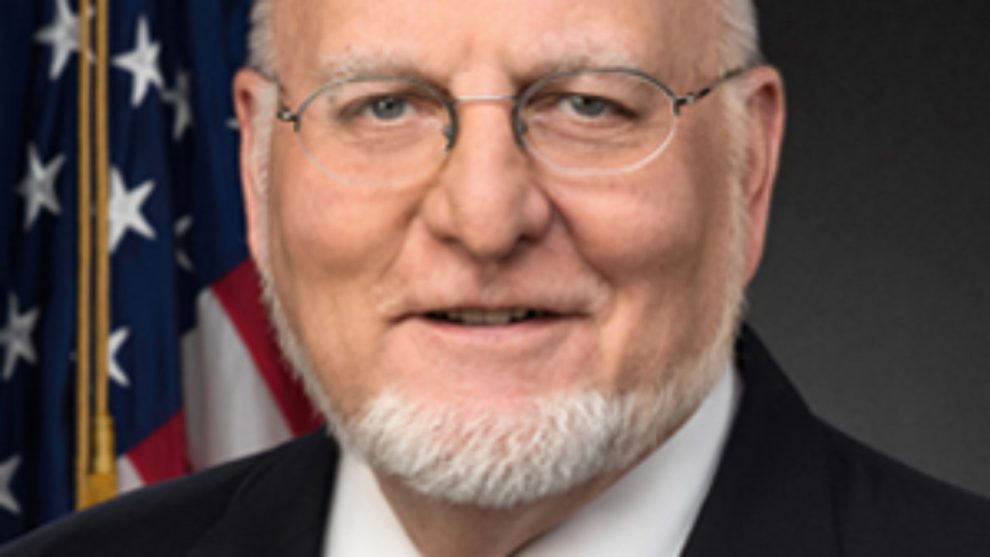Appearing Monday on AM 1030 KVOI Radio, Dr. Robert Redfield, the Director of the Centers for Disease Control (CDC), predicted that the death toll from the Chinese coronavirus will be “much, much, much lower” than the models have projected due to Americans following social distancing recommendations.
Ultra High Level Democrat Influencer Calls for Violence Against ‘Dead Man Walking’ Trump on Christmas Eve – Calls on People to ‘Put Him to Sleep’
Santa with CCW gets pulled over, tells Ohio deputy ‘you got to protect yourself’ during festive traffic stop
Nonprofit uses underwater technology to search for missing service members
Fox News ‘Antisemitism Exposed’ Newsletter: UN bigot out at Georgetown
Kim Jong Un swipes at South Korea’s progress building a nuclear submarine while inspecting his own
Poll: Young Protestants Are Officially Outnumbered by the ‘Nones’
Wild Christmas Miracle: Watch a Bona Fide Miracle in Real Time as Skydiver Gets Caught on Plane, Plummets, then Manages to Cheat Death
Biden nearly invisible in own Christmas family photo as Hunter takes center stage
5 Things the GOP Needs to Change to Win the 2026 Midterms
Lawmakers attempt to tackle NIL, giving it the ‘old college try’
LA Garbage Crisis Is So Bad One Man Quit His Job to Pick Up the City’s Slack
And We Thought Fruitcake Was Bad: Italian Company Is 3D Printing ‘Pastries’ That Are Made of Truly Gross-Sounding Ingredients
Migrant truckers sue California DMV over canceled commercial drivers’ licenses
An Elderly Customer Never Missed a Lunch or Dinner for 10 Years – When He Didn’t Show Up, the Chef Hopped in His Car and Ended Up Saving His Life
Watch: Rogue Deer Smashes Up Christmas Store After Break-In, Cops Find Her Trapped at the Scene
HOST: We were talking about some of the models, whether it’s from the imperial college guy in England or the University of Washington. Thank god some of these numbers are falling short of some of these catastrophic numbers. Tell me about the dynamic of the modeling and how it helps and influences decision making and then, when the reality comes in, how does the decision making transform?
DR. ROBERT REDFIELD: I think it’s really important. First, models are only as good as their assumptions. Obviously, there was a lot unknown about this virus. The ability to actively make a lot of assumptions was much wider than if this was an Influenza B outbreak. Second thing, I will say from a public health perspective, to me, the real value of models is to have a model and then try to understand — if I invest resources here, what does that do to the model? If I invest in intervention strategies here, what does that do to the model? It’s a way of beta testing how you’re going to respond and what it does to the different models. And models should never be used to assume that we have a number. You saw those numbers are quite staggering. You’ve got 200,000 to 2 million Americans are losing their lives before the fall. That’s a pretty staggering number.
HOST: Are throwing those kind of numbers out actually helpful because what they do is scare the hell out of everyone to social distance? Is that the purpose?
Ultra High Level Democrat Influencer Calls for Violence Against ‘Dead Man Walking’ Trump on Christmas Eve – Calls on People to ‘Put Him to Sleep’
Santa with CCW gets pulled over, tells Ohio deputy ‘you got to protect yourself’ during festive traffic stop
Nonprofit uses underwater technology to search for missing service members
Fox News ‘Antisemitism Exposed’ Newsletter: UN bigot out at Georgetown
Kim Jong Un swipes at South Korea’s progress building a nuclear submarine while inspecting his own
Poll: Young Protestants Are Officially Outnumbered by the ‘Nones’
Wild Christmas Miracle: Watch a Bona Fide Miracle in Real Time as Skydiver Gets Caught on Plane, Plummets, then Manages to Cheat Death
Biden nearly invisible in own Christmas family photo as Hunter takes center stage
5 Things the GOP Needs to Change to Win the 2026 Midterms
Lawmakers attempt to tackle NIL, giving it the ‘old college try’
LA Garbage Crisis Is So Bad One Man Quit His Job to Pick Up the City’s Slack
And We Thought Fruitcake Was Bad: Italian Company Is 3D Printing ‘Pastries’ That Are Made of Truly Gross-Sounding Ingredients
Migrant truckers sue California DMV over canceled commercial drivers’ licenses
An Elderly Customer Never Missed a Lunch or Dinner for 10 Years – When He Didn’t Show Up, the Chef Hopped in His Car and Ended Up Saving His Life
Watch: Rogue Deer Smashes Up Christmas Store After Break-In, Cops Find Her Trapped at the Scene
DR. REDFIELD: I think different people may look at it in different ways in terms of transparency. CDC had models early on. We didn’t really publicize the models. We used them internally to understand deviation strategies. I think part of the importance of getting the American public’s attention that these models did, we really need the American public to be fully engaged now with great rigor and vigilance on the social distancing. As you pointed out, those models that were done, they assume only about 50 percent of the American public would pay attention to the recommendations. In fact, what we’re seeing is a large majority of the American public are taking the social distancing recommendations to heart. And I think that’s the direct consequence of why you’re seeing the numbers are going to be much, much, much lower than would have been predicted by the models.
Story cited here.
























